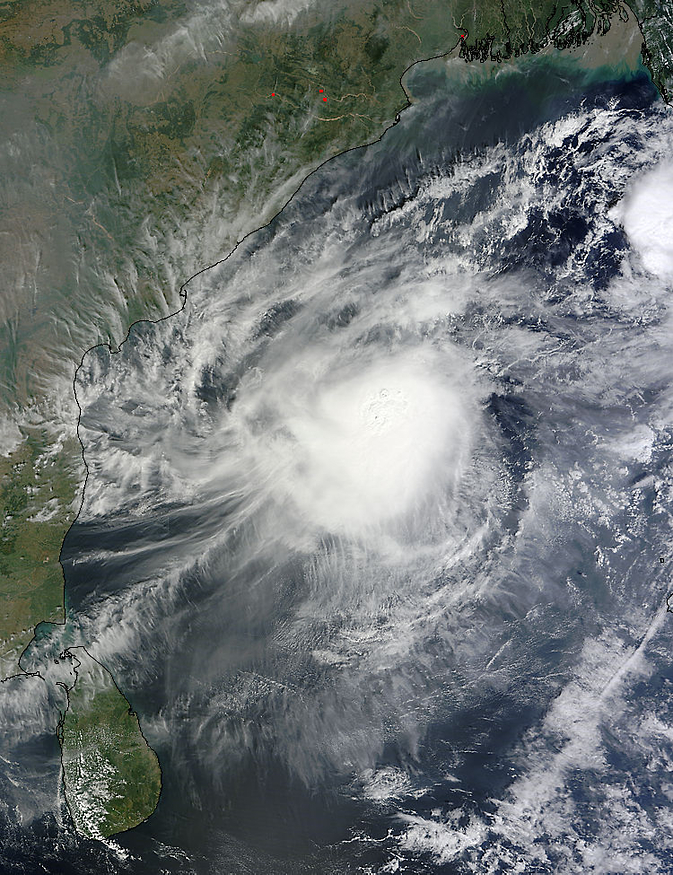NASA See Birth of Tropical Cyclone 5B in Bay of Bengal

NASA's Terra satellite flew over Tropical Cyclone 5B in the Bay of Bengal on Nov. 6, 2014. Image Credit: NASA Goddard MODIS Rapid Response Team
When Terra passed over Tropical Cyclone 5B on Nov. 6 at 05:05 UTC (12:05 a.m. EST), the MODIS instrument aboard took a visible image of the storm.
The MODIS image showed a concentrated storm with strong thunderstorms circling tight around the center and in the northeastern quadrant.
By 1500 UTC (10 a.m. EST), Tropical Cyclone 5B was located near 13.4 north latitude and 87.9 east longitude. That's about 380 nautical miles (437.3 miles/703.8 km) southeast of Visakhapatnam, India.
Tropical Cyclone 5B had maximum sustained winds near 35 knots (40.2 mph/64.8 kph). It was moving slowly to the south-southeast.
Forecasters at the Joint Typhoon Warning Center said that an upper-level (atmospheric) analysis indicates the system remains in a generally favorable environment with moderate vertical wind shear and good outflow.
Additionally, sea surface temperatures are relatively high in this region, which will help it maintain strength and slightly intensify over the next two days.
JWTC forecasters expect Tropical Cyclone 5B to make landfall near Chennai on Nov. 9 and dissipate over land quickly.
Rob Gutro
NASA's Goddard Space Flight Center
Media Contact
More Information:
http://www.nasa.gov/content/goddard/05b-northern-indian-ocean/All latest news from the category: Earth Sciences
Earth Sciences (also referred to as Geosciences), which deals with basic issues surrounding our planet, plays a vital role in the area of energy and raw materials supply.
Earth Sciences comprises subjects such as geology, geography, geological informatics, paleontology, mineralogy, petrography, crystallography, geophysics, geodesy, glaciology, cartography, photogrammetry, meteorology and seismology, early-warning systems, earthquake research and polar research.
Newest articles

Superradiant atoms could push the boundaries of how precisely time can be measured
Superradiant atoms can help us measure time more precisely than ever. In a new study, researchers from the University of Copenhagen present a new method for measuring the time interval,…

Ion thermoelectric conversion devices for near room temperature
The electrode sheet of the thermoelectric device consists of ionic hydrogel, which is sandwiched between the electrodes to form, and the Prussian blue on the electrode undergoes a redox reaction…

Zap Energy achieves 37-million-degree temperatures in a compact device
New publication reports record electron temperatures for a small-scale, sheared-flow-stabilized Z-pinch fusion device. In the nine decades since humans first produced fusion reactions, only a few fusion technologies have demonstrated…





















